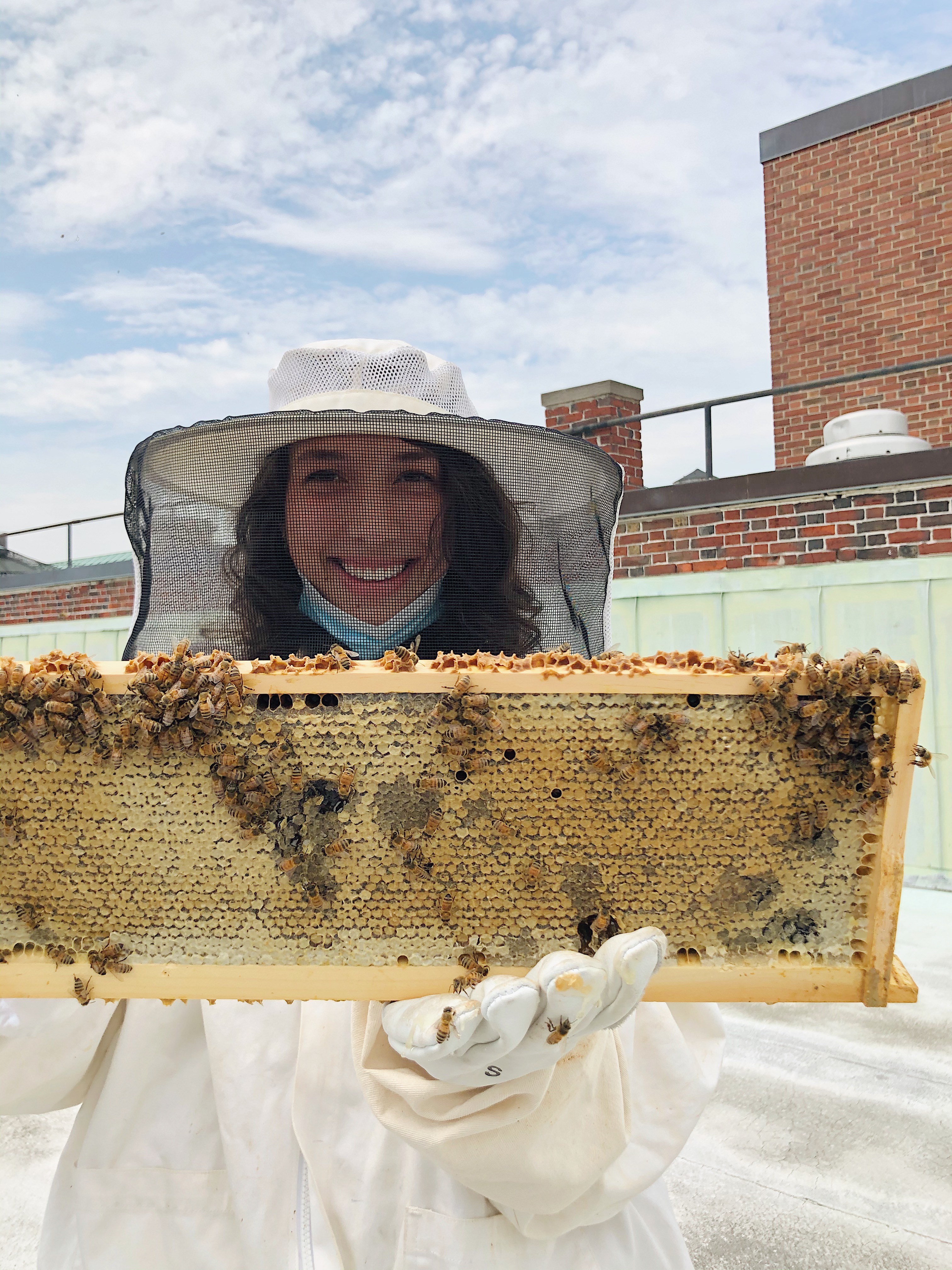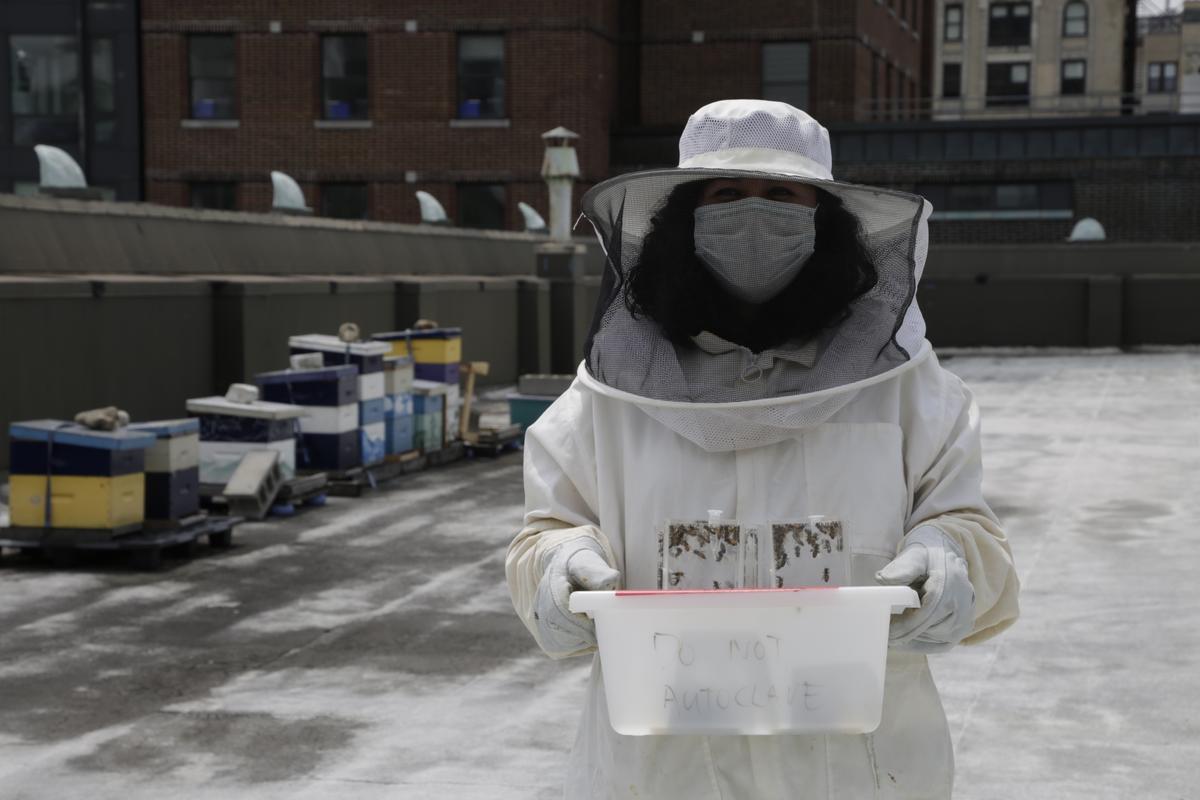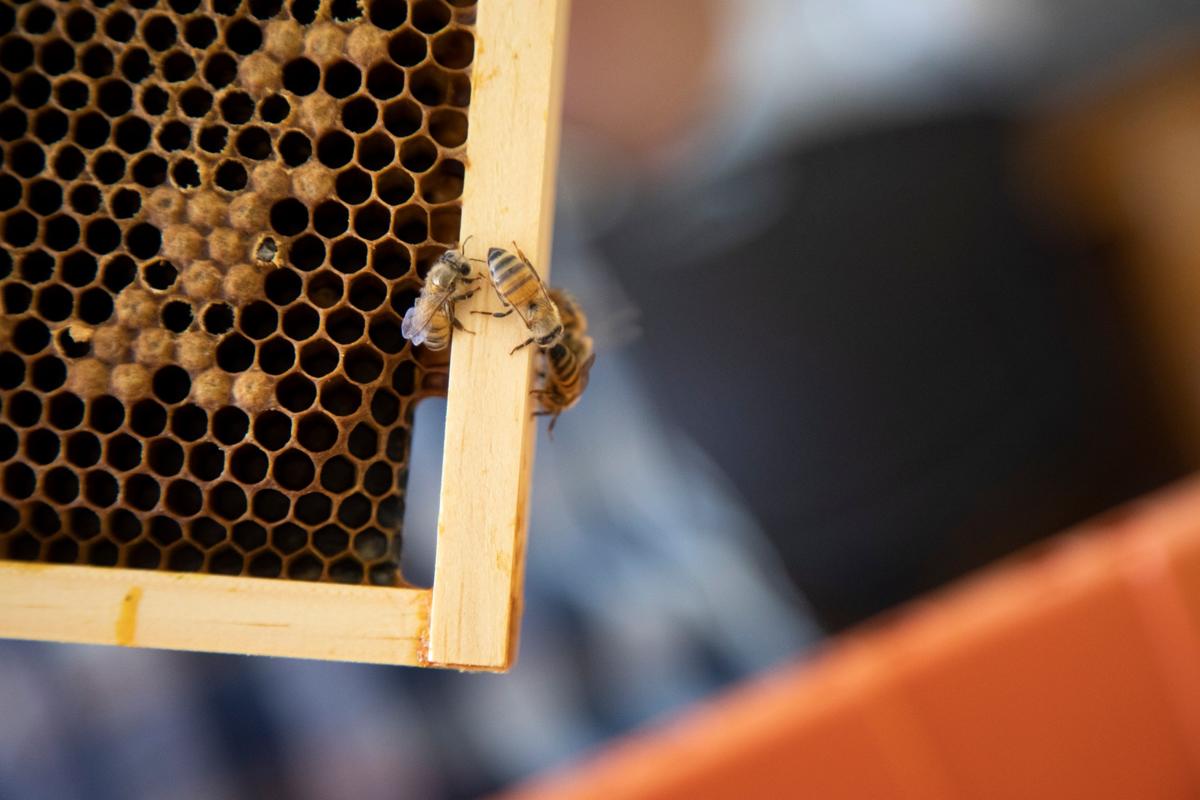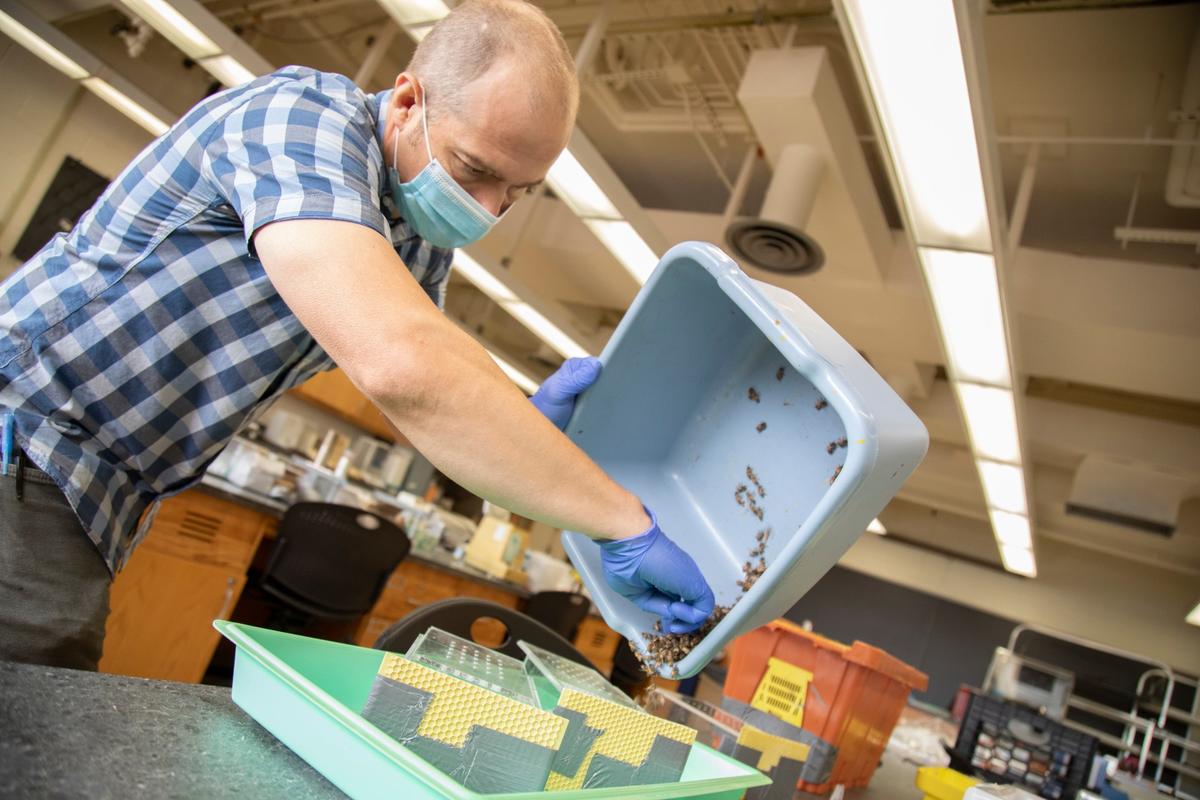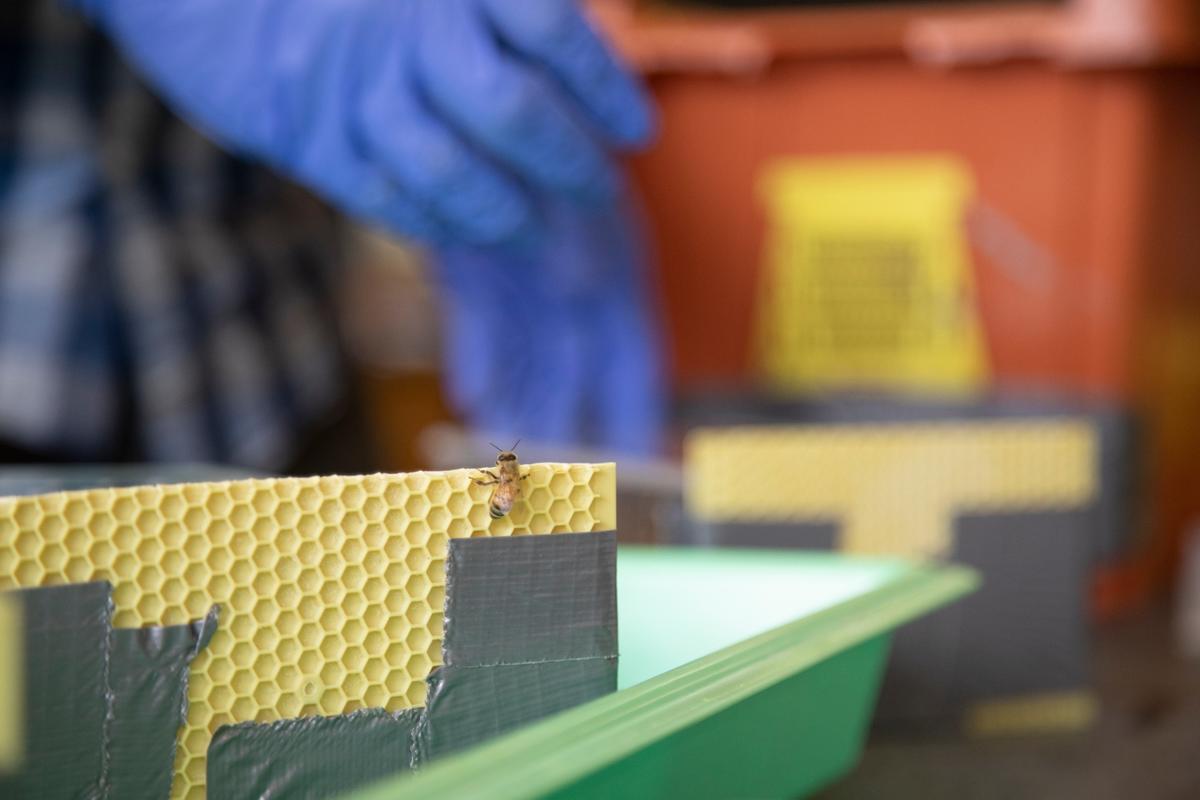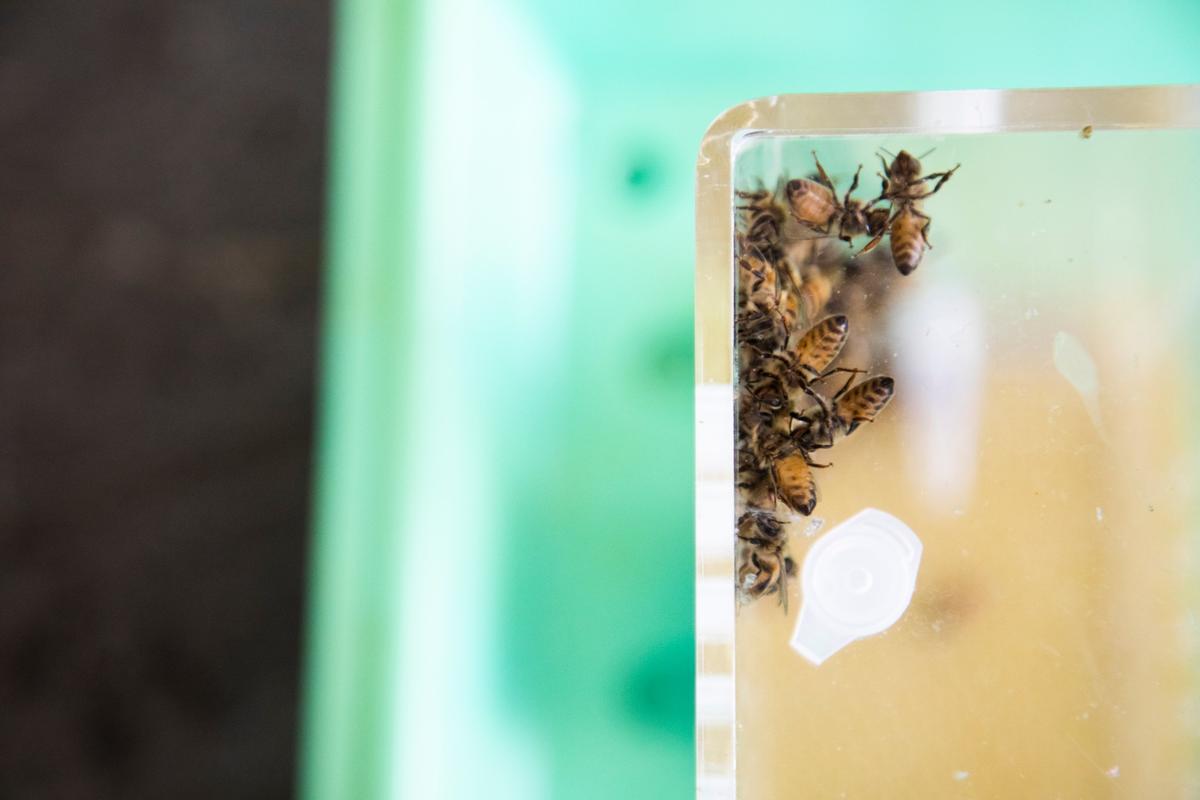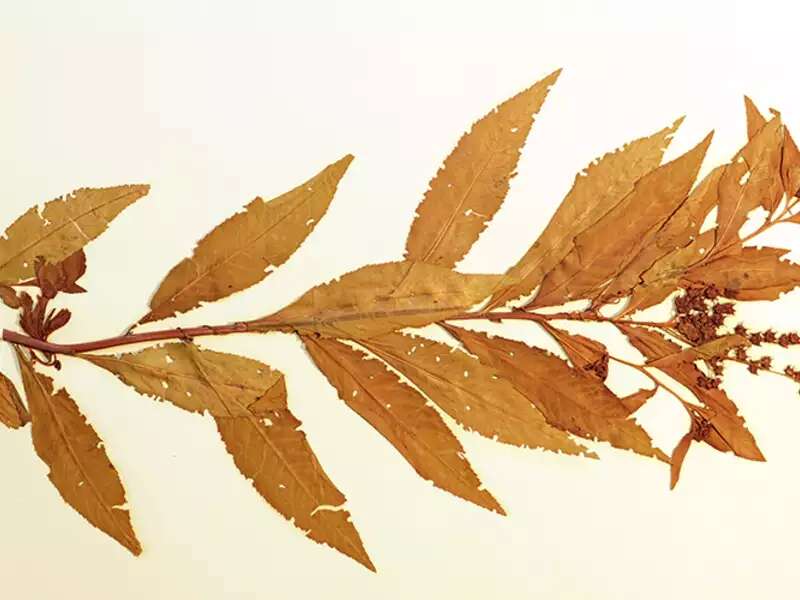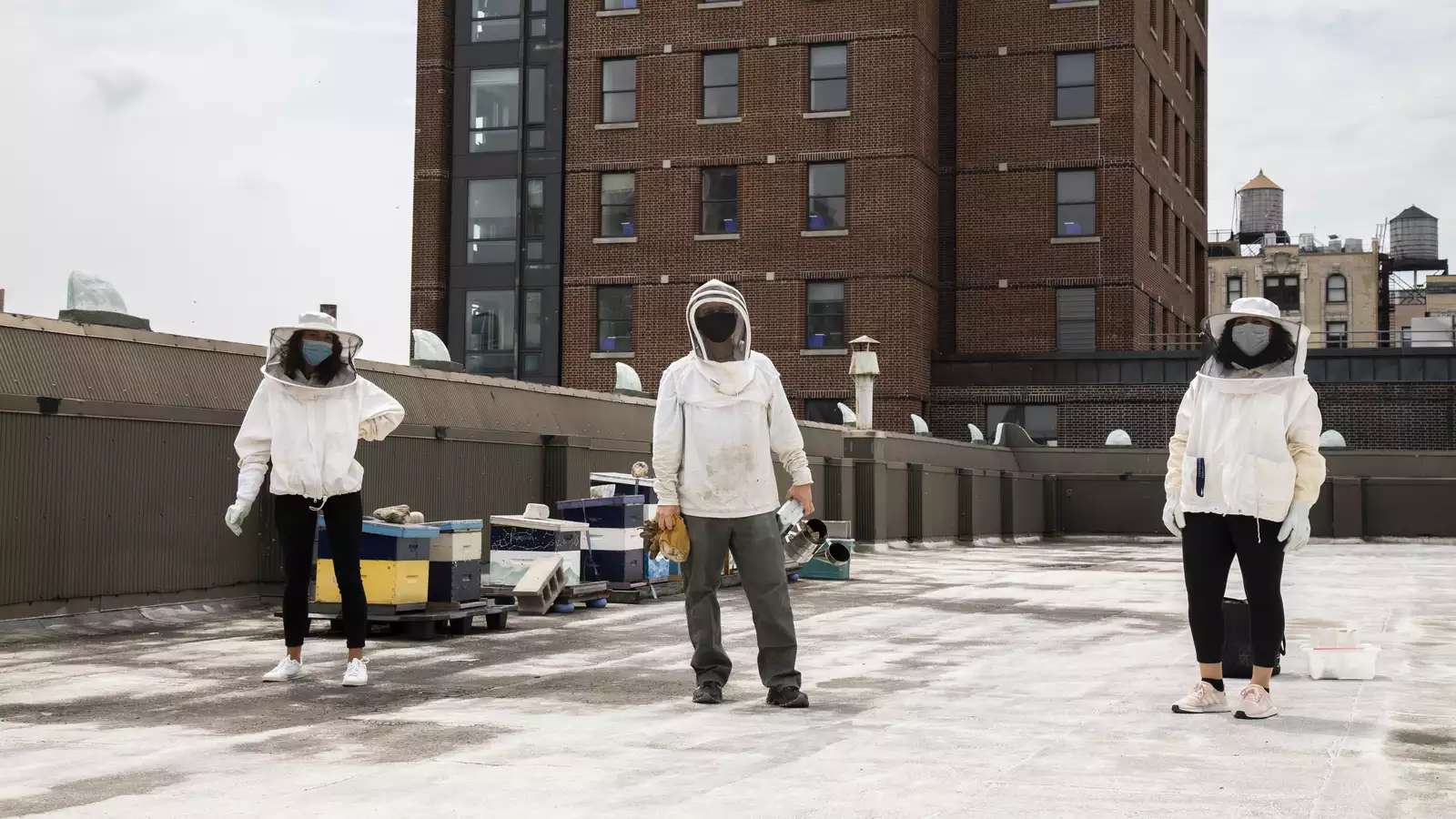
Atop the roof of Barnard Hall, assistant professor of biological sciences Jonathan Snow has been mentoring Department of Biology administrator Melissa Flores ’16 and lab technician Lena Kogan ’19 in the art of beekeeping this summer. They were also doing the very important job of making sure the bees continued to thrive over the summer when the city shut down. At Barnard’s state-of-the-art Snow Lab, Snow works closely with students investigating the challenges facing honey bee colonies and solutions for beekeepers. The experience of going from admiring honey bees from afar and maybe even fearing them to studying their behavior up close to find solutions to the colony’s challenges is one that Snow feels obligated to foster and that his students are gratified to have.
“Research intimidated me as a first-generation, low-income student, and I’d feared that being a scientist was out of my league,” Flores said of how she felt before working with Snow. “I’ve become fascinated by these complex societies of primarily female workers who work together for the collective good, which is the hive.”
Snow — who co-published the paper “Retained Metabolic Activity in Honey Bee Collected Pollen Has Implications for Pollen Digestion and Effects on Honey Bee Health” in January 2020 with Sofia Prado-Irwin ’13, Mia McKinstry ’15, and Tara Reyes Adames ’16 — is looking forward to teaching students virtually this fall. Students will collaborate via weekly remote lab meetings to discuss the latest research articles on bees.
Kogan is also excited to work with students in the fall, as she attended virtual weekly lab meetings with some of them over the summer while maintaining the hives with Snow and Flores. “My experience this summer has made me think how important the lab community, especially the undergraduate students, is to the lab and to the exchange of questions and ideas,” Kogan said.
For National Bee Day (August 15), Snow and his two mentees talk about all things honey bee related.
On their attraction to bees:
Professor Jonathan Snow: After working in biomedical sciences for 14 years, I became interested in food production and agriculture and wanted to use my background to help solve problems in this area. Within the first few minutes after I started a beekeeping course run by a local club, I was hooked and knew that I wanted to study bees.
Lena Kogan ’19: When I was little, my grandmother tended to her garden every summer. I knew that bees were helping us achieve successful harvests, so I’ve respected and admired them since childhood. I learned that Barnard had colonies during my first year and hoped to study them while I was an undergraduate student. I ended up working with fruit flies for several years instead and have been lucky enough to be able to live out my beekeeping dreams in my postgraduate life.
Melissa Flores ’16: I learned about our hives at the end of my junior year when I joined the Horowitz Dog Cognition Lab. As a psychology major, I started off in a lab focused on behavioral work, which honed my skills in scientific thought and data analysis, in addition to experimental setup and design. My years there, including a year postgrad, helped me gain confidence as a researcher. Last year, I finally worked up the courage to approach Jon and ask if I could join the lab!
I’ve always loved bees — from watching them buzz around my mother’s flowers and our building’s pool to reading beautiful passages about them in Latin by Vergil as a high schooler. I’ve been thrilled to work with them over the past year and to learn the basics of beekeeping. I hope to continue my work on bees in the future when I pursue a Ph.D.
On the most surprising fact learned about bees:
LK: I am always impressed and astounded by how intentional bees are with the organization of their hive. Everything has its place, and it’s very visual. If you take out a hive frame with larvae on it, you’ll see that the bees work meticulously to lay all of the eggs in the same place, so you can actually see a gradient of the maturing larvae.
JS: The thing I find most fascinating about bees is how they use the collective behaviors of so many individuals to maintain the healthy function of the colony so efficiently. For example, the worker bees work together to keep the core colony temperature within one degree of 94 degrees Fahrenheit year-round!
MF: As a eusocial insect, any individual bee functions as a member of the colony, which can be thought of as a superorganism. So when you’re looking at the individual parts, you always keep in mind the whole. There’s a distinction between the individuals who play the reproductive role — the queen and the male drones — and the rest of the members of the hive, who maintain the society — the female workers, who are all sisters — similar to how an organism like a human has reproductive cell lines, eggs and sperm, and the rest of the cells that keep the body working. I think that’s really cool because it means that your interests are tied to the interests of the greater society that you are a part of.
On learning beekeeping:
MF: I follow a lot of beekeepers in the city on social media platforms, but everything I’ve learned has come from being on the roof with Jon and asking questions as I observed something new. A lot of insects scare me, and I was initially a little scared of bees. But the fear came from [unintentionally] upsetting them. When I was working with dogs, I knew when my dog had understood what I had communicated to her and that she knew I was her source of security. It takes a lot more trust to hope that the bees have understood that I’m communicating that I’m not there as a threat to their home.
LK: I am learning by treating everything I notice about the bees as important, and I’m definitely asking Professor Snow a lot of questions. There are a lot of things we have answers to, and many more to which we don’t, but the mysteries are the most exciting because they create space for creativity. It’s fascinating and surreal to work with newborn bees because they can’t fly or sting, and I can just scoop them up using my hands. Being on the roof is also a really exciting part of the learning process because it’s so hands-on. I can literally feel the weight of the bees’ hard work when I’m holding a heavy honey-filled frame.
On bees teaching them something about humans:
LK: Since I started working in the Snow Lab, I’ve noticed that whenever I mention I work with bees, people are really excited to learn more about it. I think a lot of people recognize the important ways in which humans rely on bees. I don’t think I can claim to be able to use bee biology to solve challenges we face as humans, but for me, bees serve as an important reminder of how important it is that we care for and coexist with our environment. Our environment can only be a home for us if we return the favor by respecting it and paying attention to its needs.
JS: Humans have always been fascinated by the similarities between honey bee and human societies. While we can’t really make direct comparisons between the function of these two societies, social insects, like honey bees, can inspire us with how they work together for the good of the community.
MF: I definitely think more of myself in relation to my community as a result of this work. I think more of how what I do impacts others, how I can push those around me to be more accountable to each other, how I can push my leaders to do what’s best for my community and not for the monetary success of a very rich few. During this pandemic, I’ve become more active politically, more engaged with my neighbors in Astoria to participate in the various mutual aid efforts that are ongoing. It’s pushed me to work harder as my department’s administrator to make sure we’ll be ready to support our students and respond to this moment.
On how the events of 2020 have expanded the way they see lab work:
LK: The pandemic has increased my awareness of the disconnect that exists between the people running experiments and working with raw data and the larger society actually being affected by the issues being studied. I have been thinking more about how when we are doing scientific research, scientists and policymakers need to be held accountable for how they communicate the science to everyone. The research not only needs to prioritize the people and communities that are going to be affected by the issues or questions being examined, but it should also be accessible.
MF: I’m working on two big projects and have three papers in the works for publishing, which are closely tied to my hopes of applying to Ph.D. programs in the future. As an indigenous Latinx researcher who was a FLI student at Barnard, I still struggle with imposter syndrome as a scientist. Working in the lab and knowing that one day in the near future there will be several papers with my name on them makes it real. Everything that’s been going on — from the pandemic to the resurgence of the BLM movement to the victories of a slate of progressive candidates in NYC — has made every day throughout this pandemic feel urgent. And the hours of work we’ve all been putting in our department feel that much more important. My hope is that what comes from all of this is a transformed department that is truly supportive of every single student who walks our halls. So that no matter what their background is walking in, they walk away with the confidence that they belong and that their voices matter.
On the shift in the art of research and collaboration:
JS: Research has been much harder during the pandemic, and the lab closures stopped data collection in many fields. Also, labs are often tight-knit communities that prioritize in-person collaboration and support, which has been harder or impossible. On the flip side, I believe that this has led to a really amazing increase in collaboration between labs, especially in COVID-19-related fields.

